Maine Lighthouse Museum
Maine is the home of 65 lighthouses, and I was curious to learn more, so I drove down to Rockland to check out the Maine Lighthouse Museum. Like Camden and Rockport, Rockland is a town on Penobscot Bay, about eight miles south.
The Lighthouse Museum was just off Main Street, adjacent to a small park overlooking Rockland Harbor.

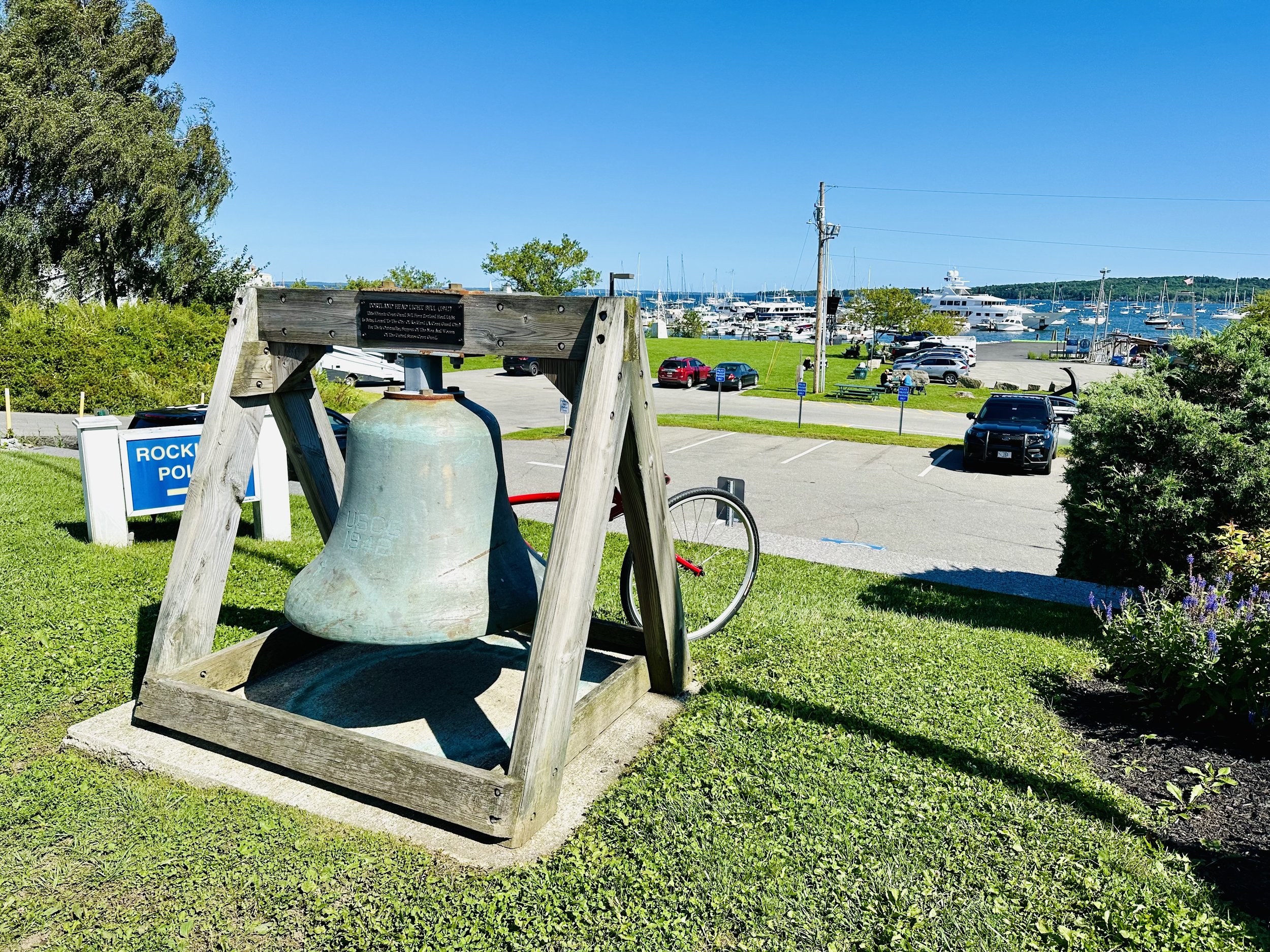
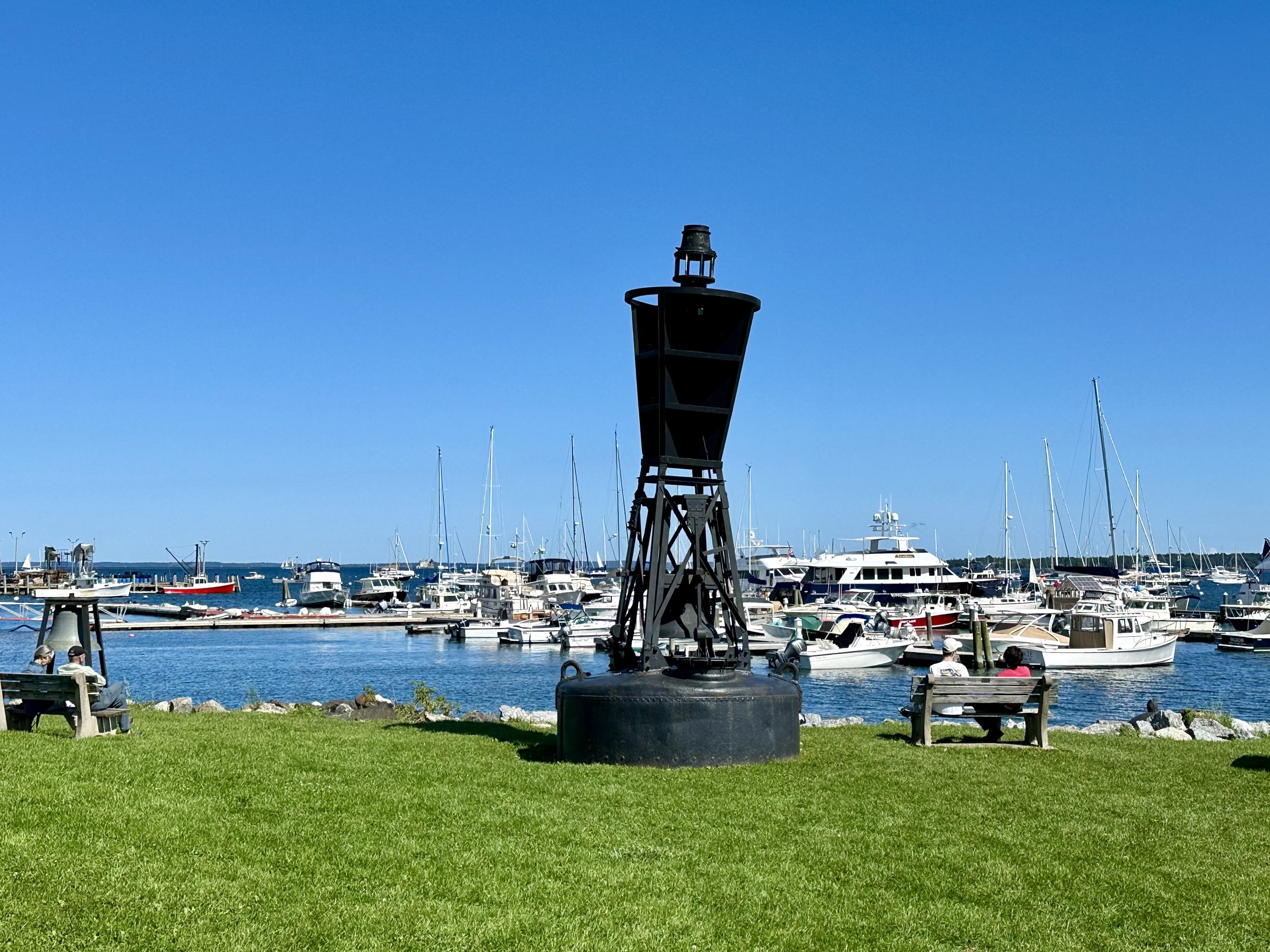
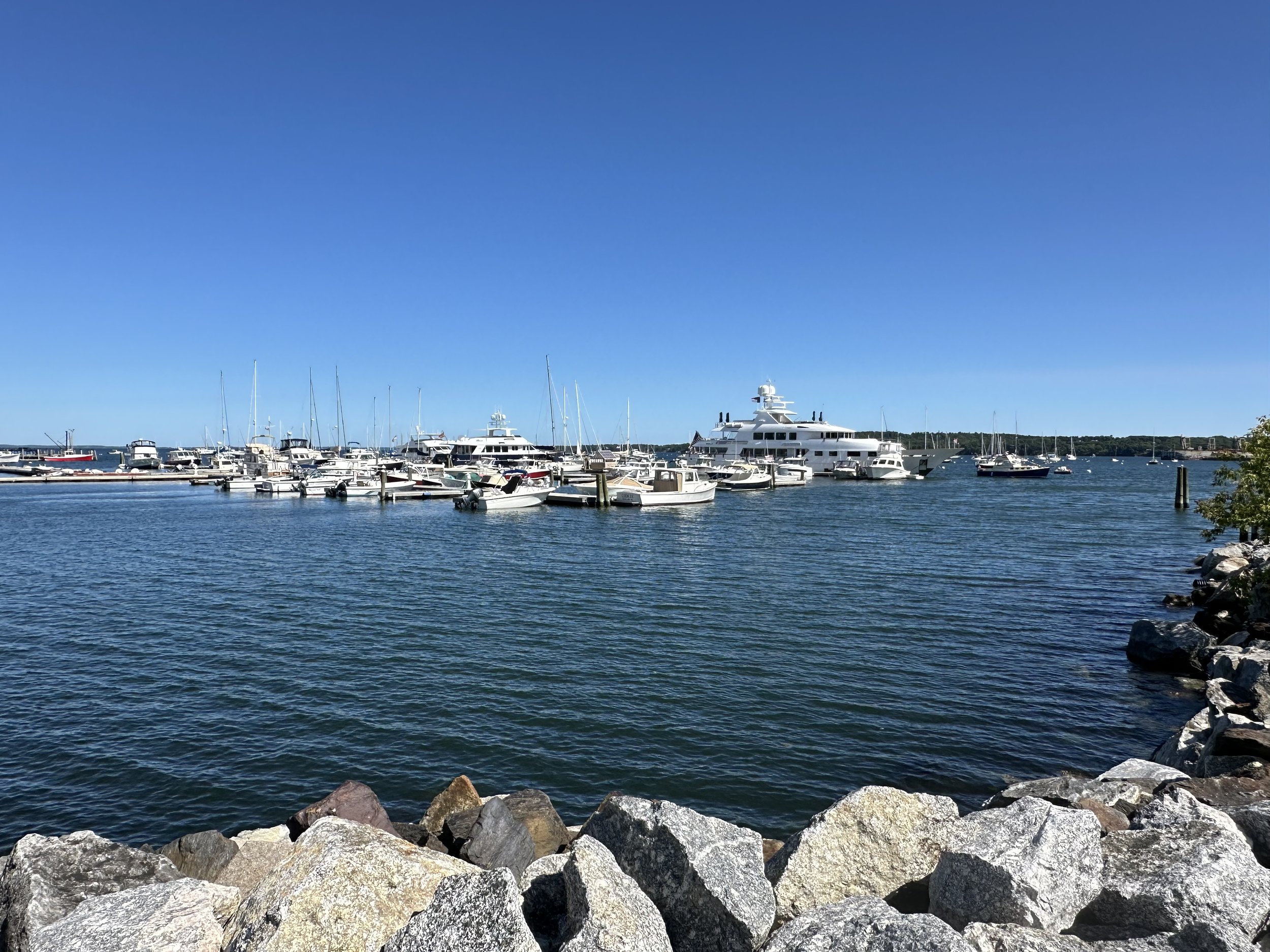
The museum was centered around a comprehensive collection of lighthouse artifacts assembled by U.S. Coast Guard commander Ken Black. I was intrigued by the evolution of lighthouse technology, from the solitary lighthouse keeper tending oil lamps, to the fully automated towers in use today. For example:
The Fresnel lens used bulls-eye glass panels with prisms to intensify the beams of light. After learning about Fresnel (fruh-NELL) lenses at the Corning Museum of Glass, it was exciting to see so many of them up close, especially the huge first order lens.
The fog bell striking machine had a hammer connected to a clock-like mechanism and weights hung on long chains. The lighthouse keeper “wound” the machine daily by cranking the weights up to the top of the tower; as the weights dropped, the hammer struck the 1,000 pound fog bell every 10 seconds.
The fog detector had a projector that sent strobe-like flashes of light into the atmosphere. Any fog particles in the air would reflect the light back to the fog detector’s receiver. When the fog particles grew thick enough, the detector would trigger a compressed air foghorn.
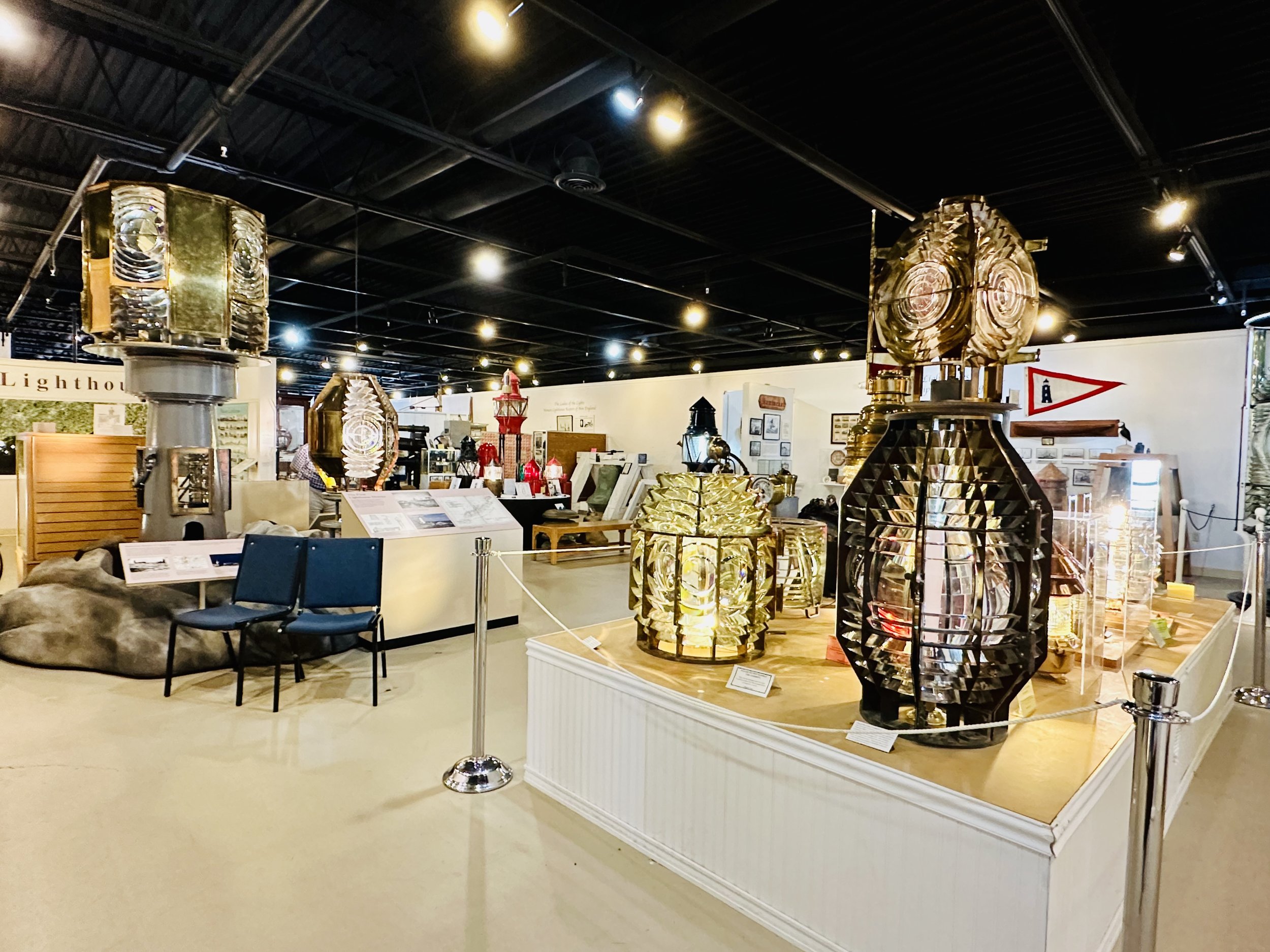
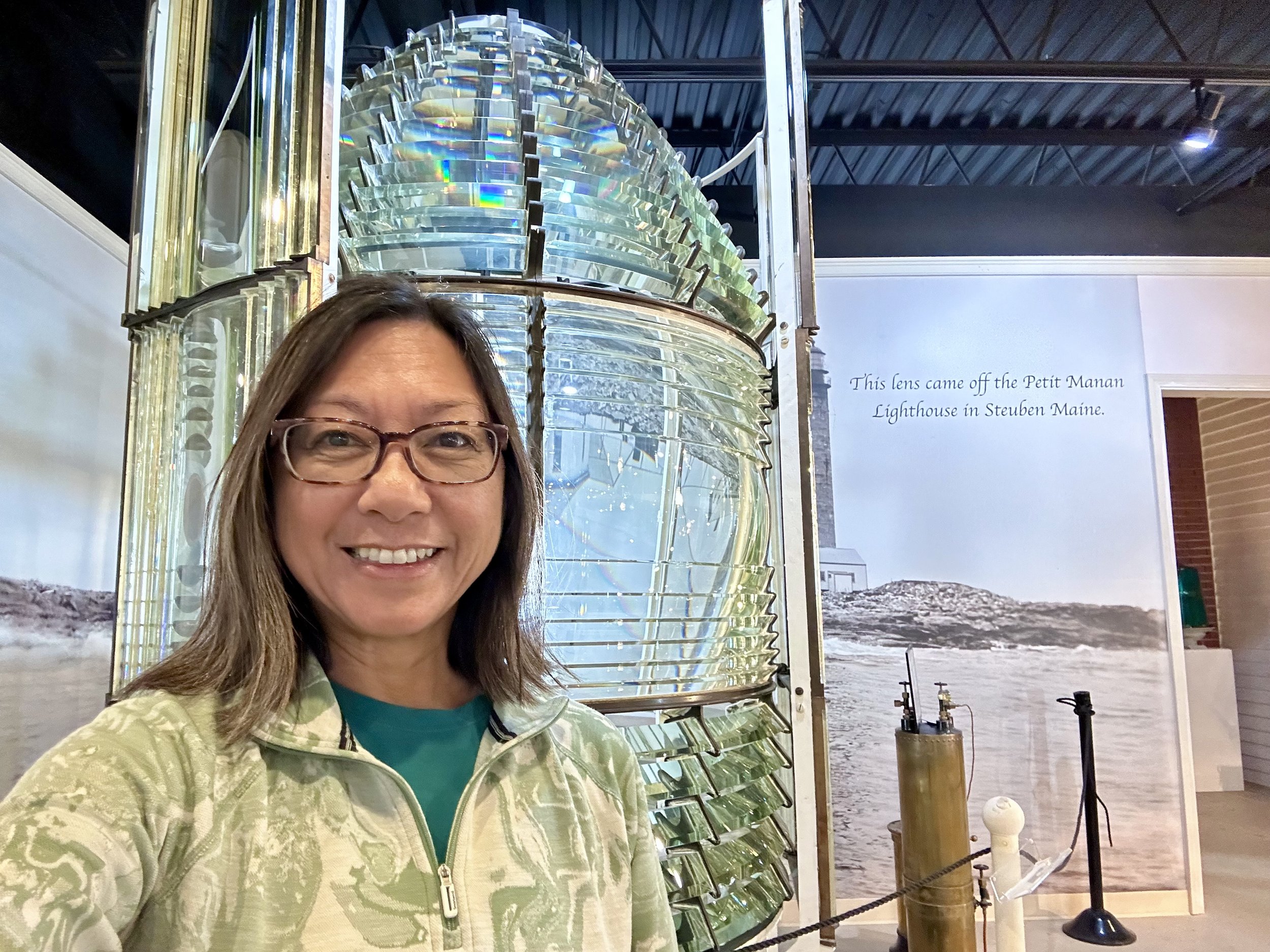
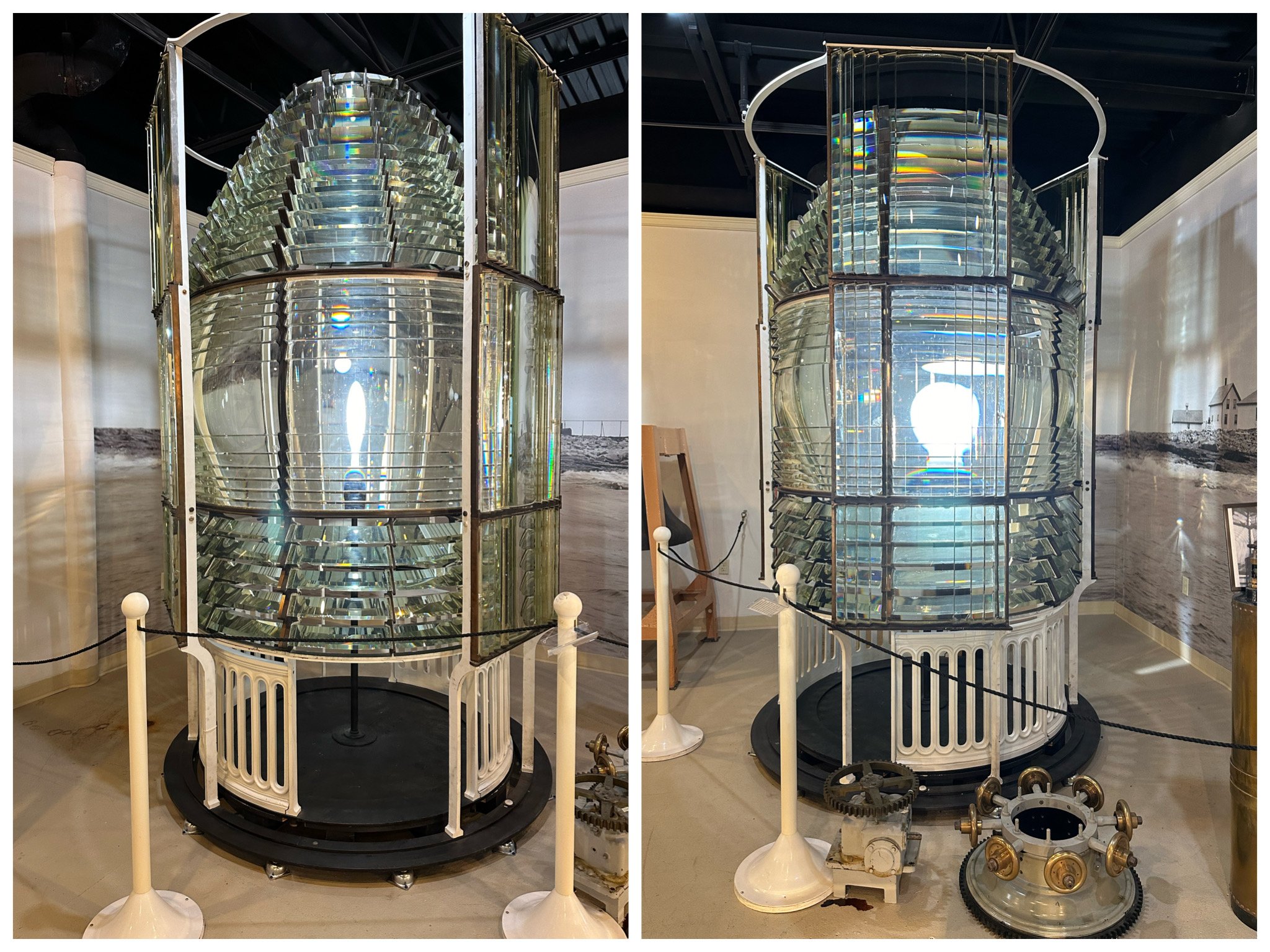
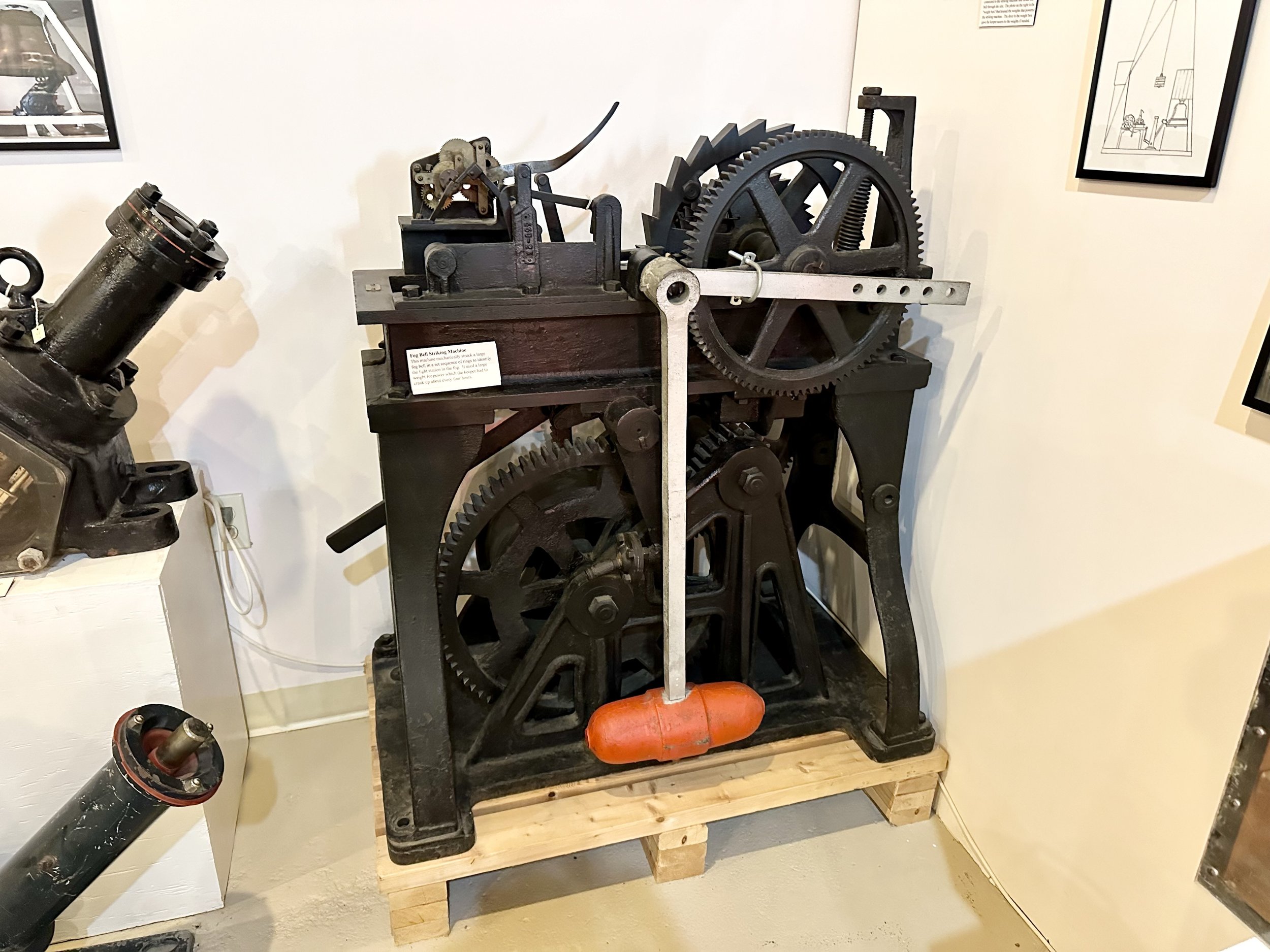
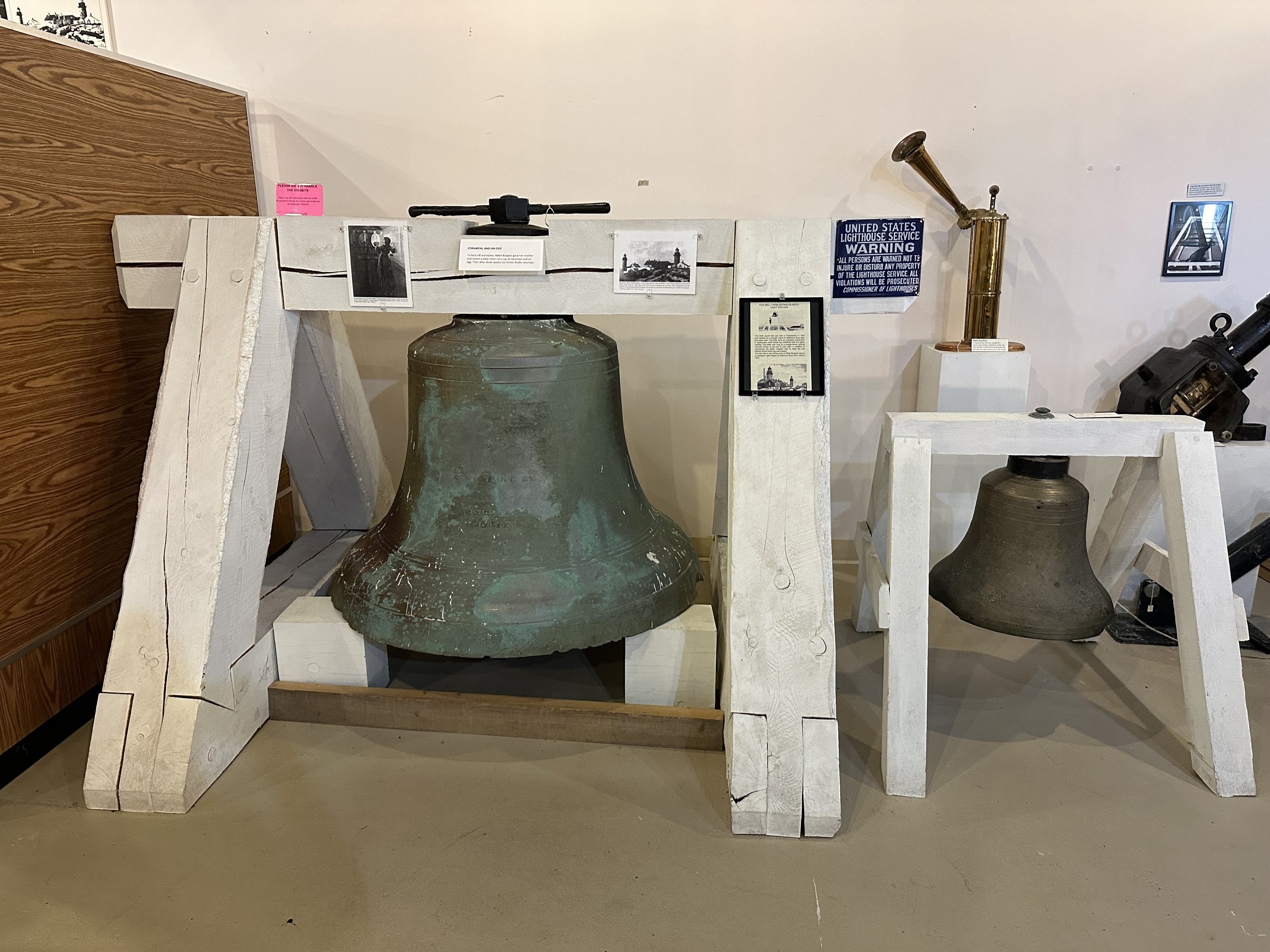
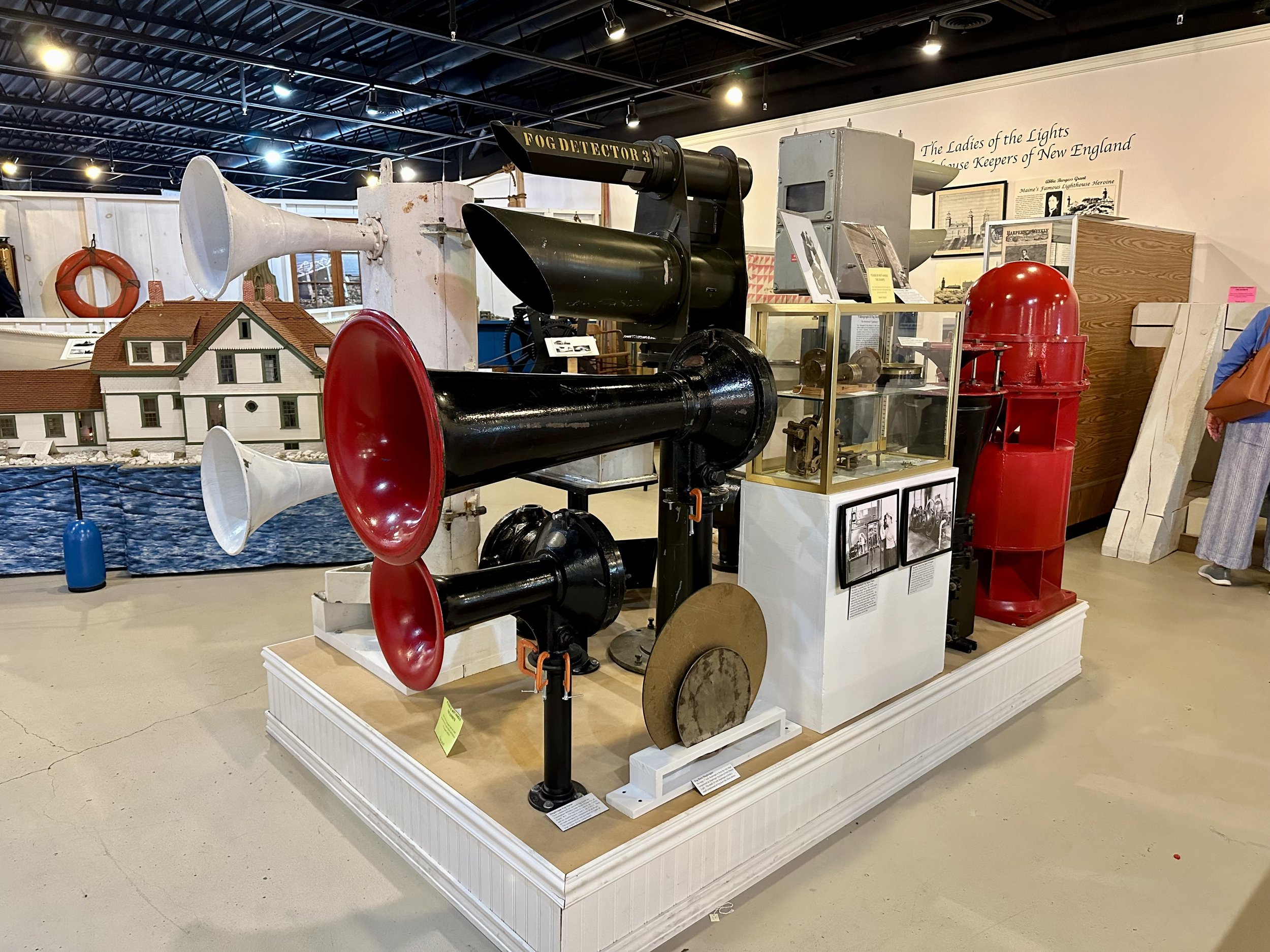
There were numerous scale models of lighthouses on display, along with many other interesting exhibits, including:
Lightships - These were anchored in places where no lighthouses could be built. With oil lamps hung high on their masts, they warned ships away from danger and occasionally took aboard crews of stranded ships.
United States Lighthouse Service, Airways Division - Established in 1926, they used small beacons - kerosene lamps on wheels - to light landing strips for small planes delivering mail. This division eventually became part of the Federal Aviation Administration (FAA).
United States Life-Saving Service - Even with lighthouses, shipwrecks happened near the coast, where other ships could not get close enough to rescue the survivors. Founded in 1878, the US LSS operated a network of life-saving stations with lifeboats and trained crews. This agency eventually became the United States Coast Guard.
Women Lighthouse Keepers - Nearly 200 women served in the U.S. Lighthouse Service, including at least 14 keepers in Maine. My favorite story was that of teenaged Abbie Burgess, who helped her family survive a terrible storm on Maniticus Rock and single-handedly tended both lighthouses for a month.
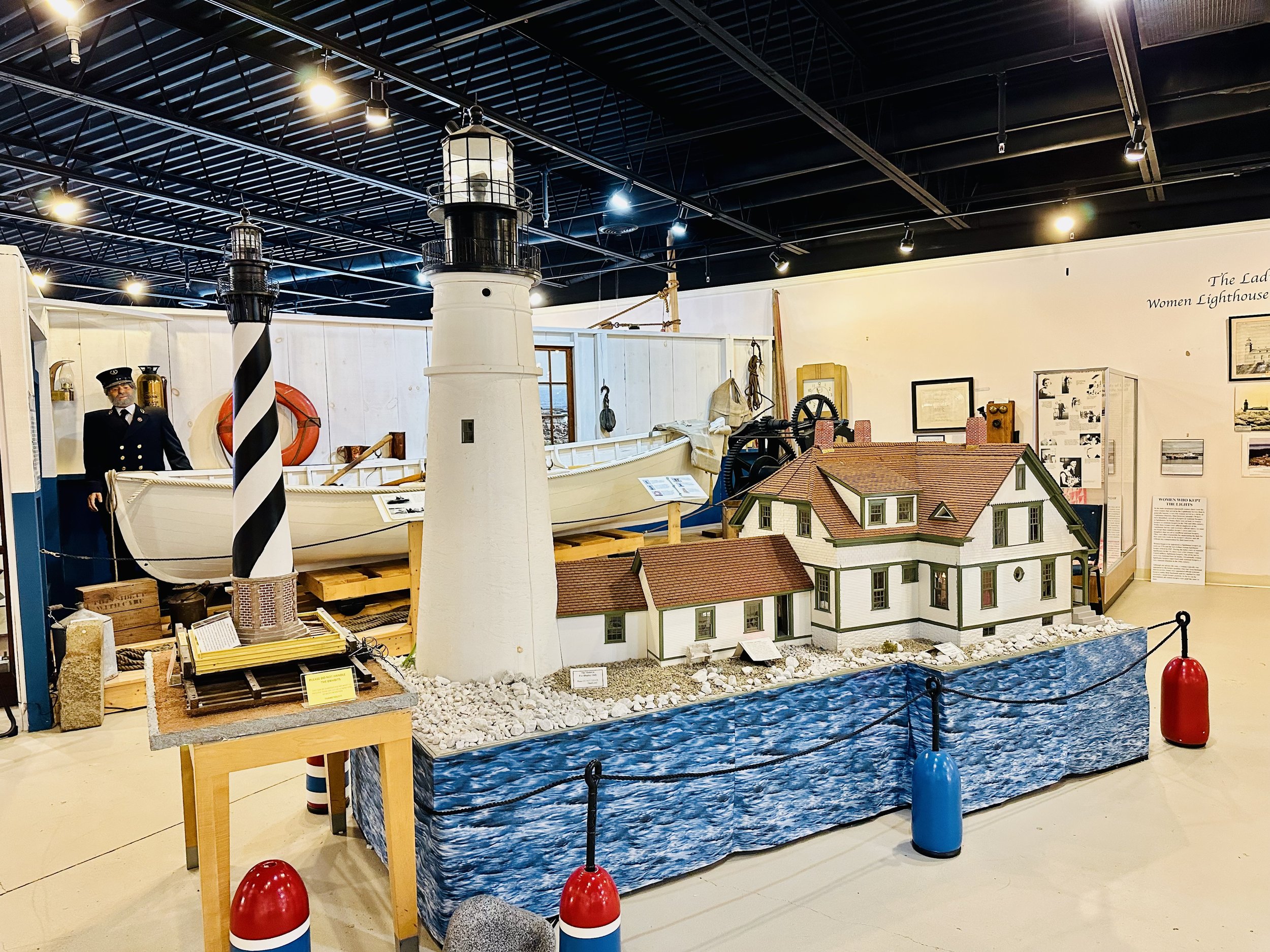
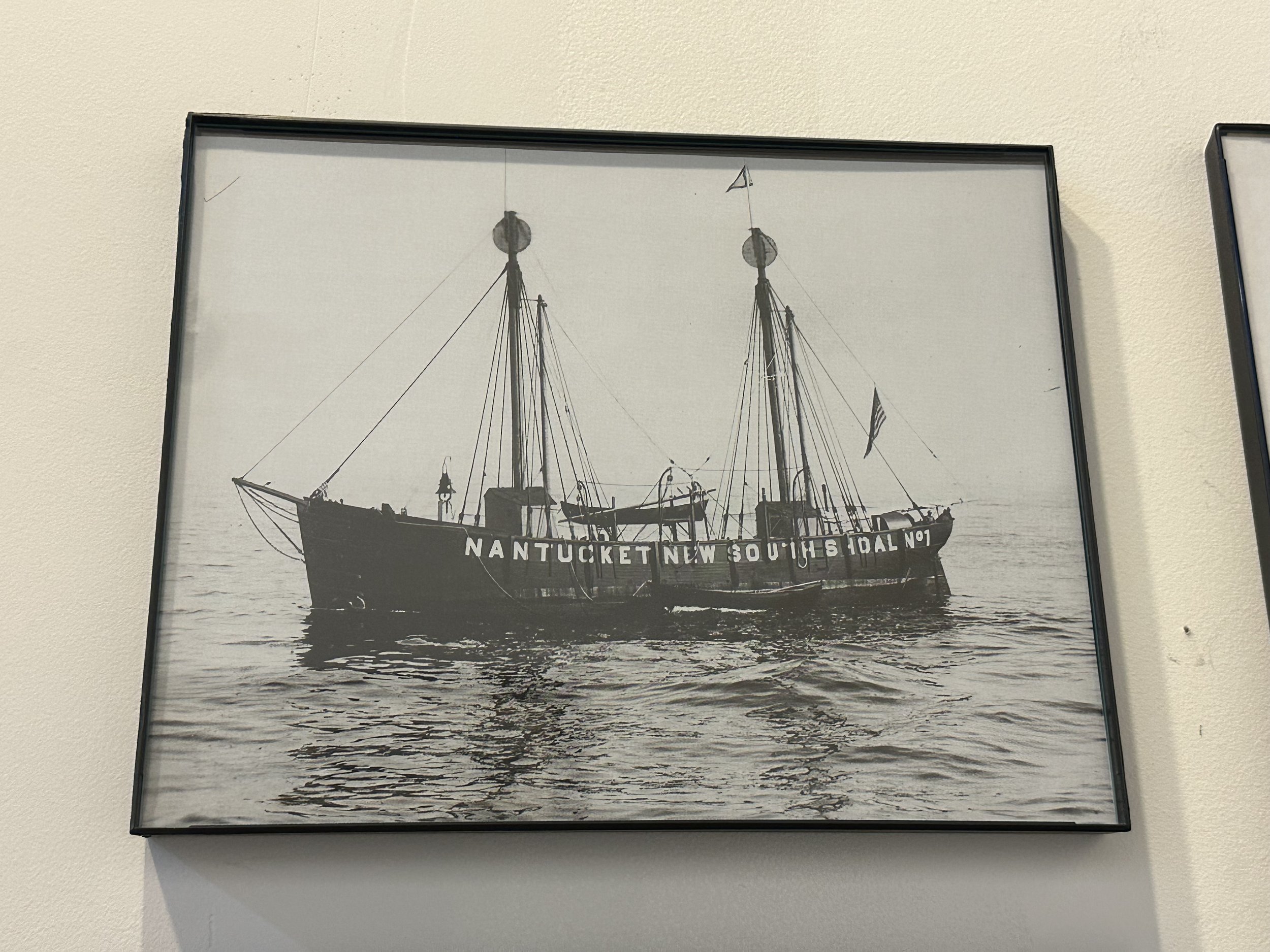
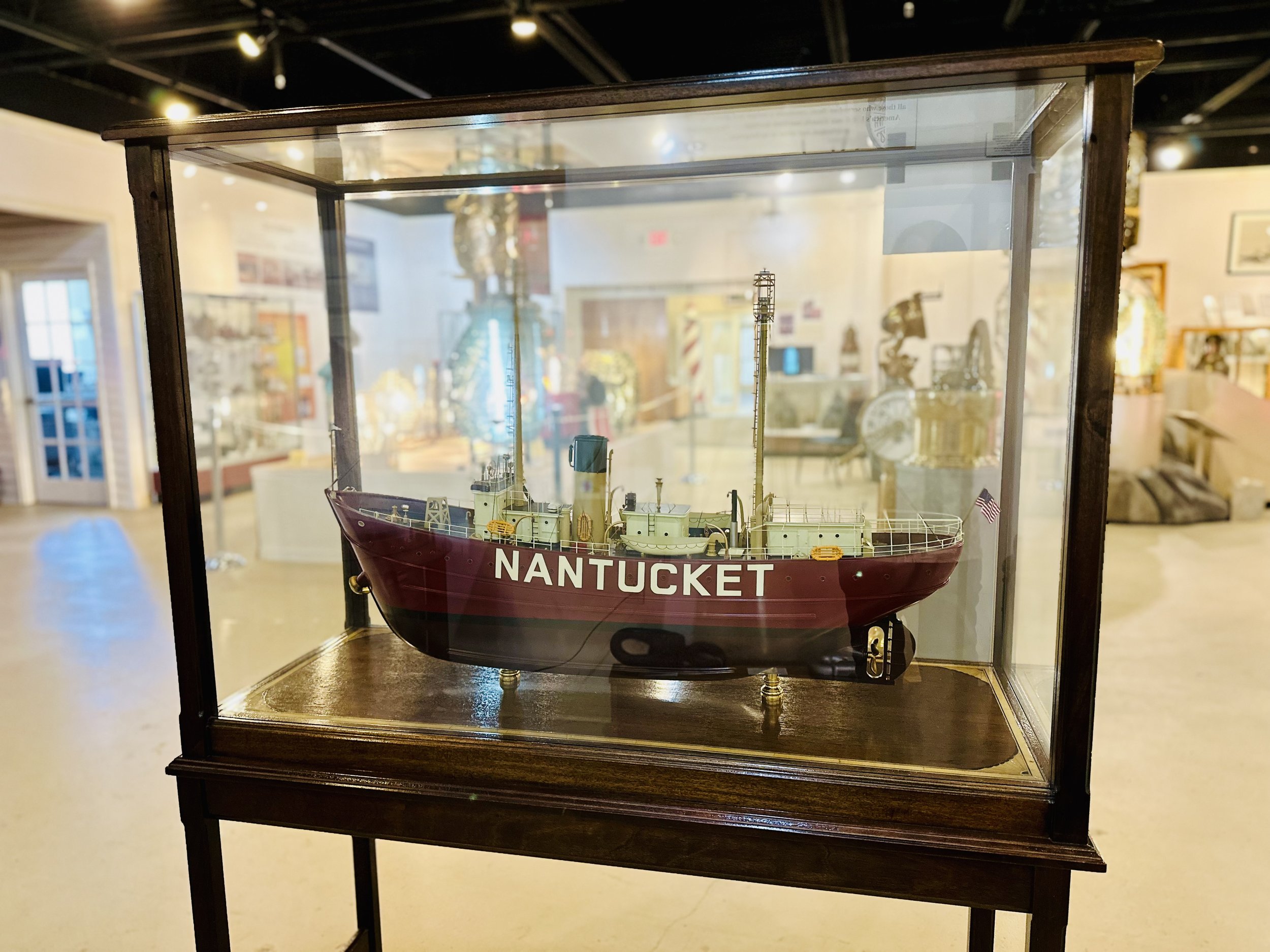


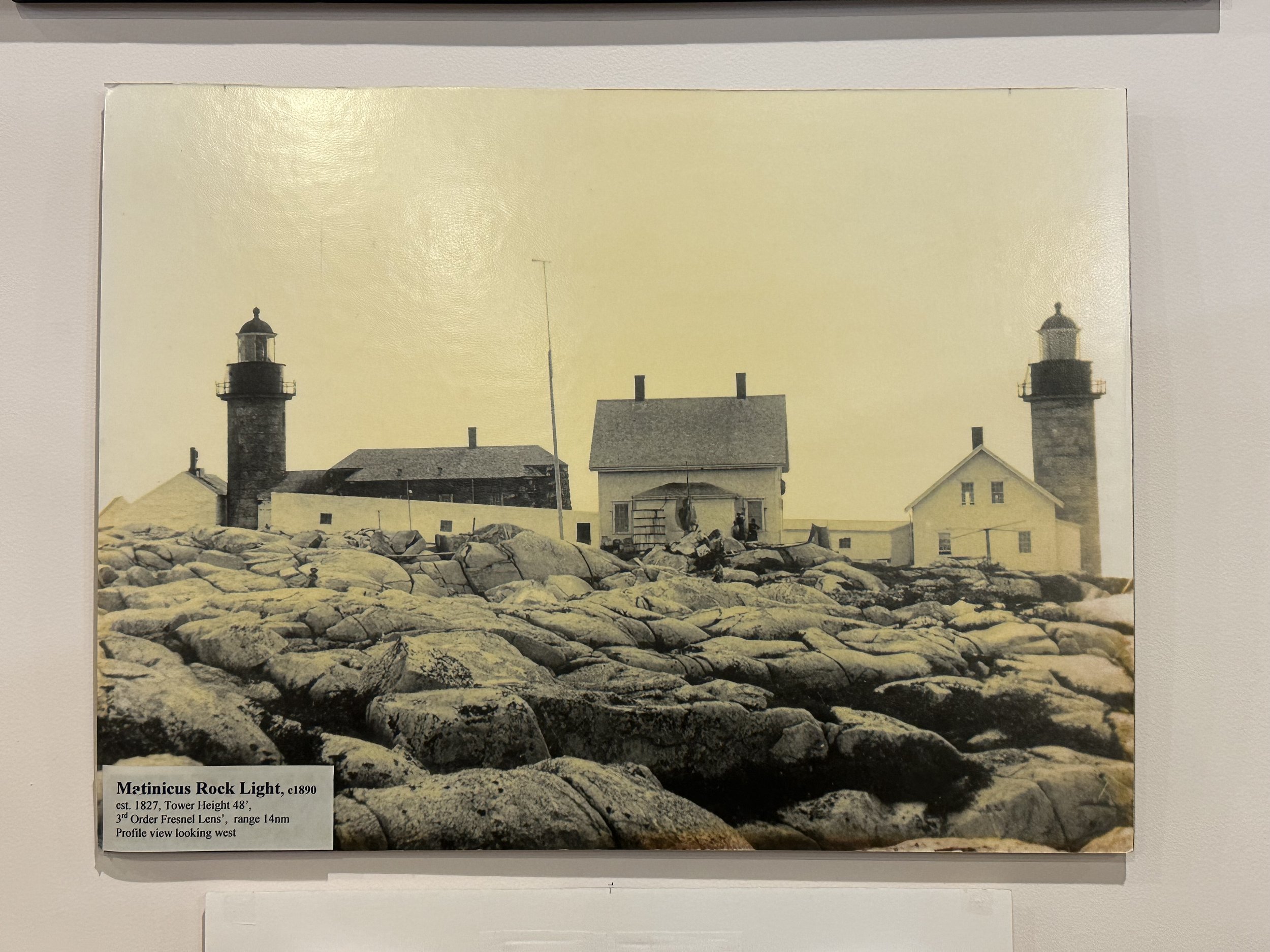
After visiting the Lighthouse Museum, I have a better appreciation of lighthouses and their keepers. Although Maine does not have the most lighthouses (Michigan has twice as many), Maine has the oldest and most iconic ones. A lighthouse is so much more than a pretty photo - it is a reminder that brave people worked hard to protect and guide all who sailed near a beautiful but treacherous coastline.